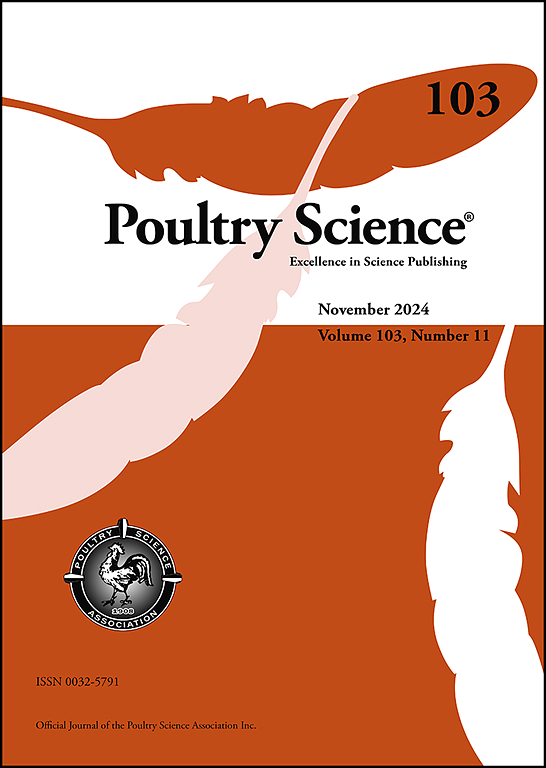LC/MS-based lipidomics and transcriptomics reveal lipid diversity and regulatory networks underlying intramuscular fat differences in Xingguo grey geese
IF 3.8
1区 农林科学
Q1 AGRICULTURE, DAIRY & ANIMAL SCIENCE
引用次数: 0
Abstract
Intramuscular fat (IMF) serves as a crucial economic indicator of meat quality. To investigate the heterogeneity of IMF composition and its regulatory mechanisms in Xingguo (XG) geese with varying IMF levels, lipidomics and transcriptomics were utilized. The analysis of lipid profiles revealed that the predominant lipids in the IMF of XG geese were glycerophospholipids (GPs), followed by glycerides (GLs). Interestingly, the low-IMF group exhibited an increase in GPs, specifically phosphatidylethanolamines (PEs) and phosphatidylcholines (PCs), while the high-IMF group showed elevated levels of triacylglycerols (TAGs). Transcriptomic analysis indicated that genes related to extracellular matrices (ECM)-receptor interactions, focal adhesion, mitogen-activated protein kinase (MAPK), and forkhead transcription factors O (FoxO) signaling pathways were upregulated in the low-IMF group. In contrast, genes involved in metabolic processes were more pronounced in the high-IMF group. A comprehensive analysis combining lipidomics and transcriptomics identified CD36, fatty acid-binding protein 5 (FABP5), troponin I2 (TNNI2), and coronin-6 isoform X1 (CORO6) as essential regulators influencing IMF accumulation in XG geese. This research emphasizes the significant lipids, genes, and signaling pathways that play roles in IMF accumulation, providing a theoretical basis for enhancing the meat quality of XG geese.
求助全文
约1分钟内获得全文
求助全文
来源期刊

Poultry Science
农林科学-奶制品与动物科学
CiteScore
7.60
自引率
15.90%
发文量
0
审稿时长
94 days
期刊介绍:
First self-published in 1921, Poultry Science is an internationally renowned monthly journal, known as the authoritative source for a broad range of poultry information and high-caliber research. The journal plays a pivotal role in the dissemination of preeminent poultry-related knowledge across all disciplines. As of January 2020, Poultry Science will become an Open Access journal with no subscription charges, meaning authors who publish here can make their research immediately, permanently, and freely accessible worldwide while retaining copyright to their work. Papers submitted for publication after October 1, 2019 will be published as Open Access papers.
An international journal, Poultry Science publishes original papers, research notes, symposium papers, and reviews of basic science as applied to poultry. This authoritative source of poultry information is consistently ranked by ISI Impact Factor as one of the top 10 agriculture, dairy and animal science journals to deliver high-caliber research. Currently it is the highest-ranked (by Impact Factor and Eigenfactor) journal dedicated to publishing poultry research. Subject areas include breeding, genetics, education, production, management, environment, health, behavior, welfare, immunology, molecular biology, metabolism, nutrition, physiology, reproduction, processing, and products.
 求助内容:
求助内容: 应助结果提醒方式:
应助结果提醒方式:


